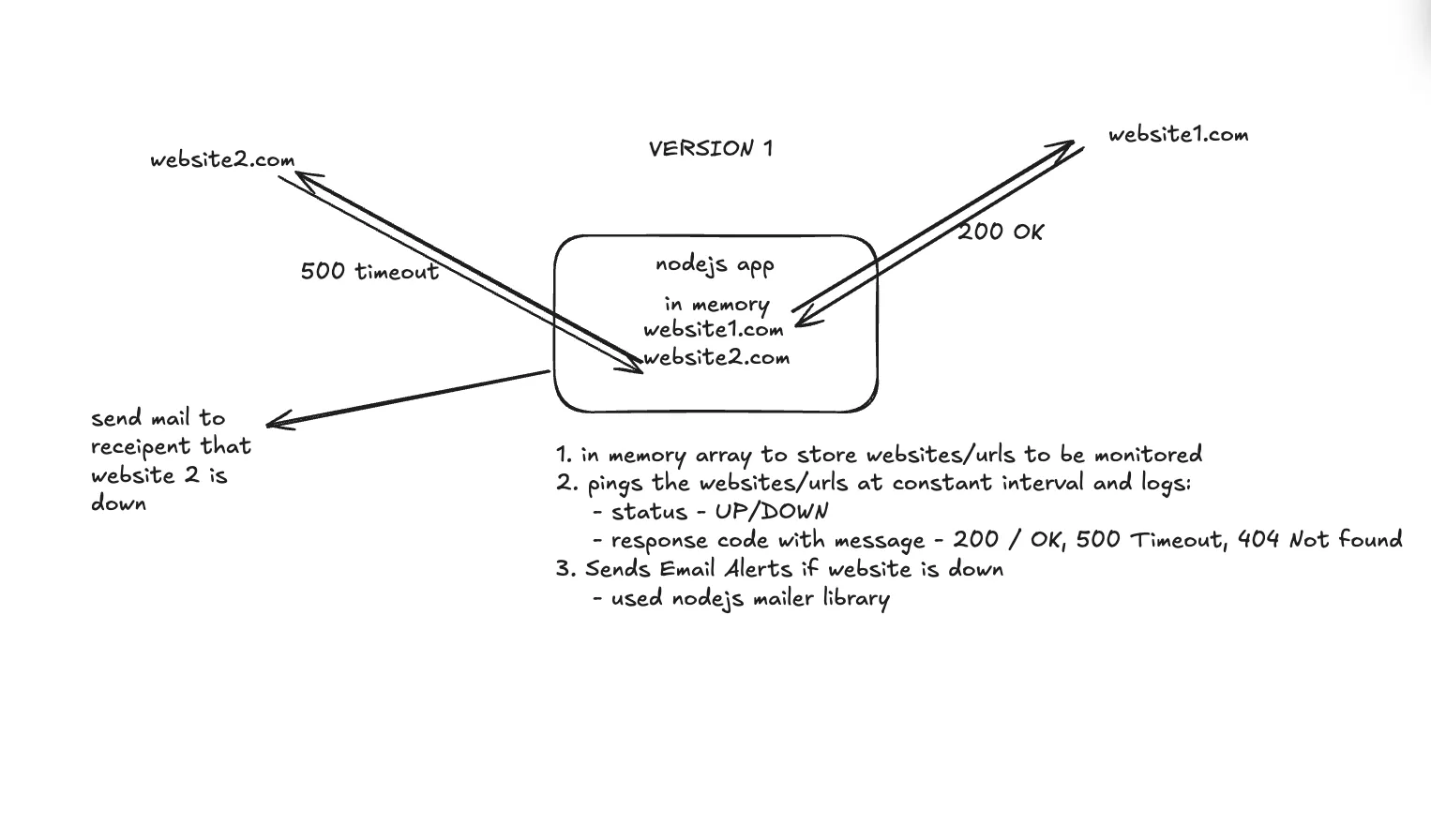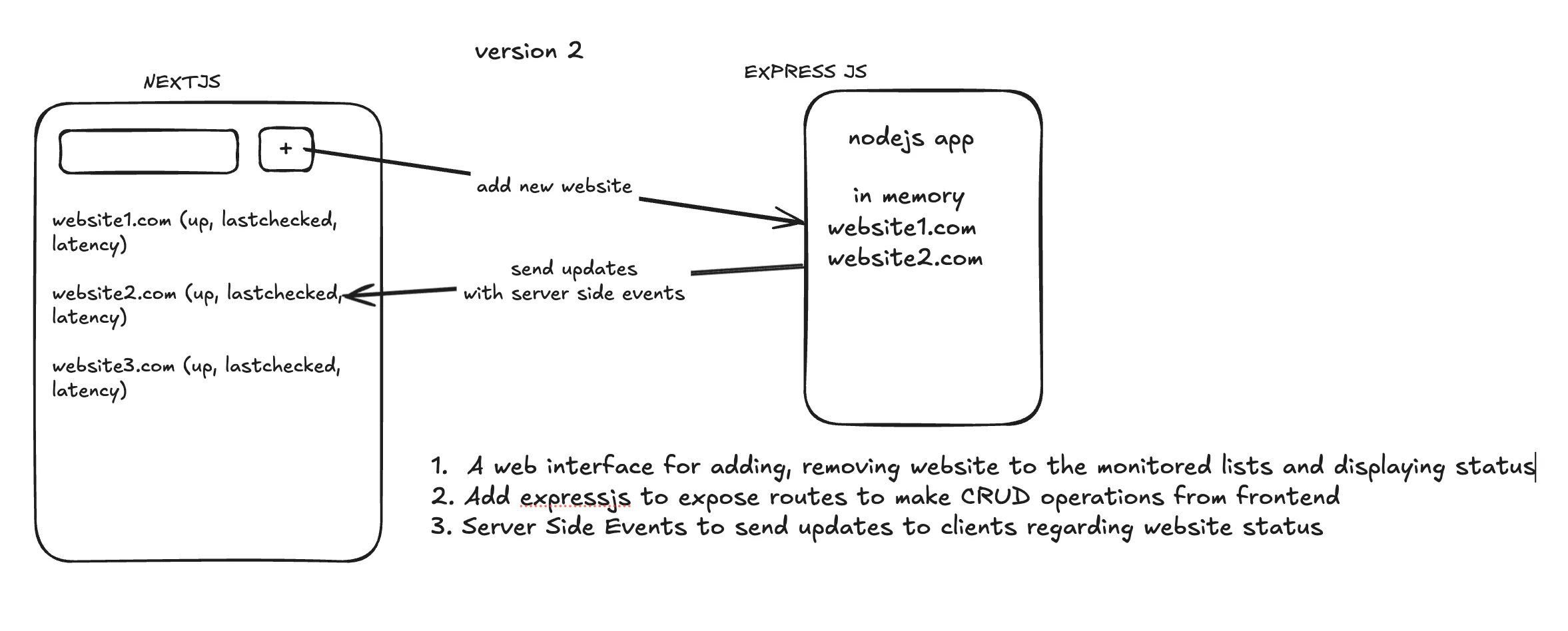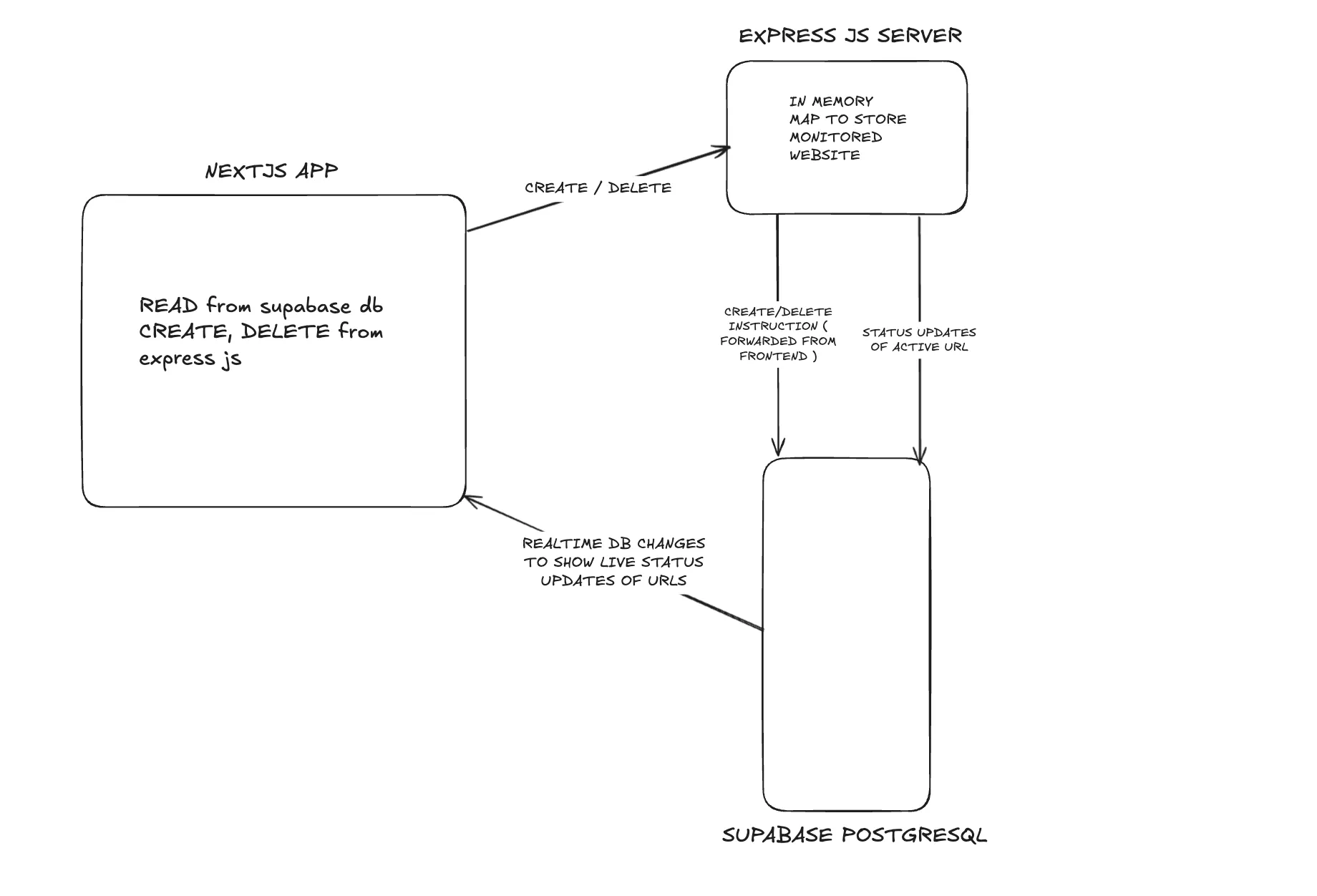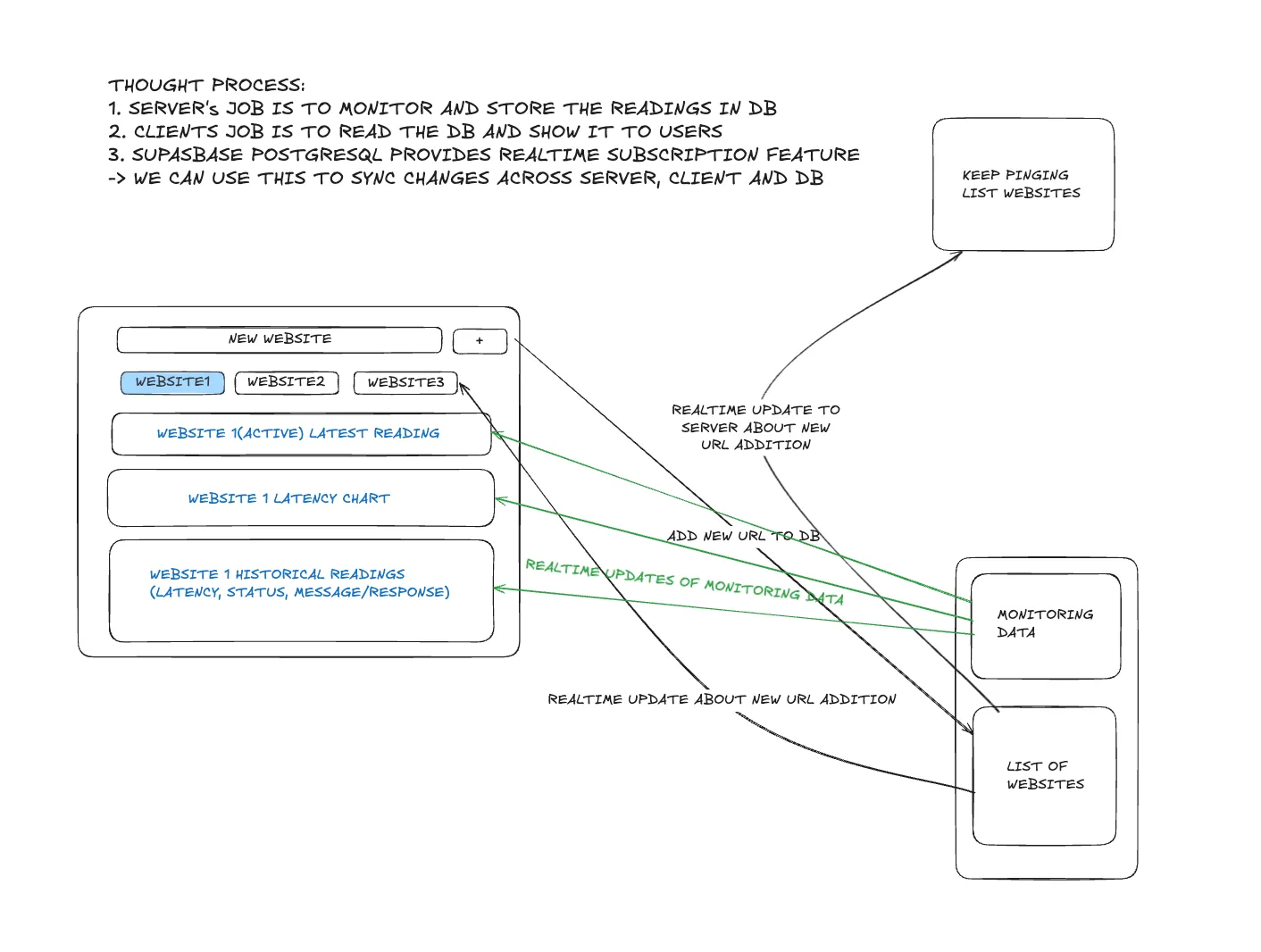Features
- Real-time Monitoring: Track website status and performance in real-time
- Custom Monitoring Intervals: Set different monitoring frequencies for each website
- Interactive Dashboard: View detailed performance metrics and status history
- Data Visualization:
- Real-time latency graphs
- Status indicators with color coding
- Historical performance data
- Data Export: Export monitoring data in CSV format with flexible date range selection
- Status Classifications:
- UP: Website is responding normally
- DOWN: Website is not accessible
- DELAYED: Response time consistently exceeding threshold
- PENDING: Initial monitoring state
Tech Stack
- Frontend: Next.js with React
- Backend: Supabase
- Database: PostgreSQL (via Supabase)
- Charts: Recharts
- UI Components: shadcn/ui
- Icons: Lucide React
- Date Handling: date-fns
Diary
v1 - nodejs app

Inspiration
Learnings
- How NodeJS balances concurrency?
- JS being a single threaded language, it still supports async programming by the event driven architecture of NodeJS
- Timers Fire Independently, but Callbacks Are Sequentially Executed
- Multiple HTTP requests can occur simultaneously without interfering with each other.
- When responses arrive, their callbacks are queued and executed sequentially by the event loop.
- The famous “chef in the kitchen” analogy to understand Nodejs concurrency
v2 - add web interface

Learnings
- Why Server Side Events?
-
a lightweight and efficient mechanism to deliver real-time updates
-
frontend is expecting the updates from backend at regular interval which is a one way communication which make it a perfect usecase for sse
-
SSE maintains a persistent HTTP connection, which is more efficient than repeatedly polling the server for updates.
res.setHeader('Content-Type', 'text/event-stream'); res.setHeader('Cache-Control', 'no-cache'); res.setHeader('Connection', 'keep-alive');
-
- When do we add expressjs framework to our nodejs app?
- Express makes it easy to create and maintain RESTful APIs.
- Express helps manage the increased complexity like multiple endpoints and SSE
- Helps integrate middleware like
corsfor cross-origin requests andexpress.json()for parsing incoming JSON payloads.
v3.0 - add db, sync with db, deploy the app

Learning
- Serverless vs Server
-
This is the first project I built which required a server which needs to work continuously on its own ( i.e. keep pinging the websites to be monitored and store the result in db).
-
Initially I deployed the expressjs as a VERCEL function without realising its serverless nature.
-
Problem - The deployed server behaved inconsistently:
→ the monitored websites map was not being maintained when a new website was being added
→ the supabase db was updated with only few statuses, hardly 3-4
- Persistent in-memory storage
- The fact that expressjs itself was maintaining a state of its own in map(data structure) to keep a track of the monitored websites was completely against the serverless nature of Vercel.
- Long-lived processes
- Monitoring websites with
setIntervalrelies on a process running continuously. Serverless functions terminate after executing their logic, so they cannot support such continuous operations.
- Monitoring websites with
- Persistent in-memory storage
-
Solution
- Deploy the server using a PAAS ( Platform as a service ) called Render.
- Problem with render free plan - shuts down after 15 mins of inactivity
- Temporary solution - write a cron job that keeps pinging the server on a separate endpoint that returns a simple “OK” to avoid inactivity
-
v4.0 - fixing bad architecture and multiple monitoring

Learning
- Multiple Source of Truths
- Subscription to realtime changes for all website at the same time
- Do I really need an ExpressJS server?
v4.1 - adding export data feature
v4.2 - improving performance and security
→ frontend performance using subscription channel effectively
→ db performance and security using stored procedures